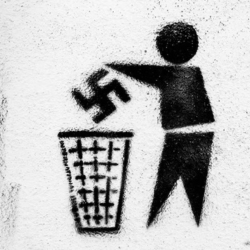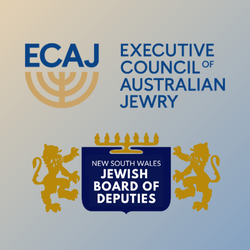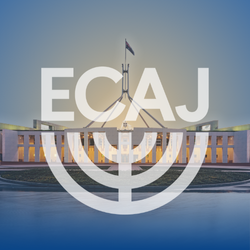The piece has been published in ABC Religion & Ethics and J‑Wire by ECAJ Co-CEO Peter Wertheim AM.
Last week, the federal Attorney-General Mark Dreyfus announced that the Australian government intends to enact The Counter-Terrorism Legislation Amendment (Prohibited Hate Symbols and Other Measures) Bill in order to criminalise public displays of the Nazi Hakenkreuz (hooked cross) and the Schutzstaffel (or “SS”) hate symbols, and ban the trade in these items.
The new law comes in response to a marked increase in the display of Nazi symbols on public structures, private homes, motor vehicles, personal clothing and online content in Australia over the last seven years. (A detailed list of these incidents was provided by the Executive Council of Australian Jewry in its written submission to the recent Senate Inquiry into the Criminal Code Amendment (Prohibition of Nazi Symbols) Bill 2023 — which had been introduced by the federal opposition.)
The public display of Nazi symbols goes well beyond the realm of freedom of speech, and such displays are not merely “offensive”. They are acts of menace and intimidation. Placing a Nazi sign or carrying a Nazi flag in a prominent public place is not an expression of an idea; it is a way of promoting hatred and violence against particular individuals and groups, and against the principles of personal freedom, justice, and democratic equality that undergird Australian society.
A welcome feature of the new law is that it will empower police to issue and enforce on-the-spot directions to remove Nazi symbols from public display, whether or not charges are laid or a prosecution results.
The new legislation will also be the first in Australia which will contain an explicit prohibition against the trade in items featuring Nazi symbols. These items are quite different from most military collectibles and war memorabilia. Nazi memorabilia often relate directly to the Nazis’ barbaric crimes against Jews and a host of other groups. These items have been used by neo-Nazis to promote and glorify Nazi crimes and ideology, and as icons for recruitment and ritual purposes by neo-Nazi groups.
The display, promotion and sale of Nazi and Holocaust memorabilia desensitises people to the grisly realities of the Nazi regime by reducing racism, irrational hatred, and mass murder to a prosaic everyday occurrence, like an ordinary commercial transaction. This is a slap in the face to members of groups and communities who have historically been the targets of Nazi policies of genocide, mass murder and other forms of persecution — such as Jews, Roma people, and LGBTIQ+ people, and to Australian ex-service people who sacrificed so much to rid the world of the evils of Nazism.
Many businesses have already decided voluntarily not to engage in this disreputable trade, understanding how it undermines the sense of safety and security of all Australians.
All of these measures were expressly advocated by the Executive Council of Australian Jewry (ECAJ) and supported by other Jewish community organisations at the recent Senate Inquiry. The federal government’s initiative has therefore been broadly and warmly welcomed by the Australian Jewish community. Driving Nazi symbols and memorabilia off our streets and computer screens, and back into the murky fringes of our society, will deprive neo-Nazis of some of their most prized tools for promoting their hatreds and recruiting new members.
Where does the legislation fall short?
There are, however, some limitations in the measures proposed by the government. The first and most obvious is that the ban will only apply to two Nazi symbols, the Hakenkreuz and the “SS” symbol. The ban will not apply to other well-known Nazi symbols — such as the Totenkopf (death’s head) and Sonnenrad (sun wheel), as well as a plethora of neo-Nazi symbols that are continually evolving.
In its submission to the Senate Inquiry, the ECAJ urged that any banning legislation be flexible enough to accommodate the constant evolution of new hate symbols by neo-Nazi groups, as well as traditional Nazi symbols and the symbols of political movements that were historically allied to the Nazi regime in Germany. (Some of the more common symbols that have been used in recent years by neo-Nazi groups can be found in the ECAJ’s Annual Report on Antisemitism in Australia in 2022; and the code words which they have developed to promote their ideology are summarised in the ECAJ’s Annual Report on Antisemitism in Australia in 2020.)
It would be better for the federal Bill to adopt the approach taken in the New South Wales Crimes Act, where it is an offence to display, without a reasonable excuse, a “Nazi symbol”. “Nazi symbol” is not defined, and the behaviour proscribed by the state legislation is therefore not limited to the display of named Nazi symbols. The question of whether a symbol is a “Nazi symbol” in the circumstances of any particular case is left to a judge or jury to decide on the evidence. Past experience with other anti-hate legislation has demonstrated that they are perfectly capable of making such assessments accurately. A Bill has been introduced by the Tasmanian state government that takes a similar approach to the New South Wales model.
Another shortcoming in the federal government’s approach is the absence of any prohibition against the public performance of Nazi gestures, such as the Hitler salute. The public display of Nazi symbols has frequently been accompanied by the performance of Nazi salutes. This has occurred outside the Victorian parliament as a symbolic takeover of a key public space, and also outside a Holocaust museum as an act of undisguised menace and intimidation.
These shows of “strength” are also calculated to attract media attention to promote Nazi hate-ideology and advertise for new members. The failure to include a prohibition against Nazi gestures in public is therefore a serious omission.
Counter-terrorism?
It is curious that the federal government has pitched the new law as a “counter-terrorism” measure. It seems that the government has come to the view that it will need to rely on the defence power as the constitutional basis for any ban on the public display of Nazi symbols, and that the defence power will only sustain a ban on Nazi symbols which are specified, rather than on Nazi symbols generally, and will not sustain any ban on Nazi gestures.
If this is indeed the basis of the government’s approach, I believe it reflects some questionable thinking. For while terrorism and the public promotion of racial hatred are not mutually exclusive, they are fundamentally different species of criminality, with very different defining elements.
As an alternative, the ECAJ’s submission to the Senate Inquiry urged reliance on the external affairs power and Australia’s treaty obligations under the International Convention on the Elimination of All Forms of Racial Discrimination. This head of power, in our view, is the more appropriate one for this kind of legislation, and it would enable the parliament to enact legislation that is free of the limitations we’ve already identified.
Legislation is not enough
That said, counteracting any form of extremism, including neo-Nazism, through legislative means alone will not, in our view, address the underlying problem — namely, the propagation of the kinds of prejudice, conspiracy fantasies and other falsehoods which fuel extremism and extremist violence, and the grooming and recruitment of alienated young people by extremist groups to be used as foot-soldiers for these purposes. While legislation sets society’s standards, and in that sense serves an educative purpose, those standards need to be entrenched in the ethos, culture, and operations of government and civil society institutions more broadly.
This is a large subject, but suffice to say that federal and state legislation against the promotion of hatred must be complemented by enhancements to the education system so as to inoculate students against prejudice and extremism beginning in early primary school, and reinforced in both the core and non-core curricula throughout the school years.
For the foregoing reasons, the government’s initiative, though a welcome step, does not go far enough.






